
Gabriel Buttigieg: A New Visual Language
If you get to read about an artist’s life, almost any artist’s life – whether it’s Claude Monet’s, Paul Cézanne’s, or Pablo Picasso’s – you will notice that each and every one of them share one thing in common: they all pass through stages of artistic development. Whether their stylistic evolution is conditioned by their quest to create a more refined language, or because their creative process has been completely swiveled by a mentor or a muse, the transitional phase is bound to happen at certain points in their artistic career. One of the perks of being an art blogger is having the opportunity to see some of the works that artists produce during this experimental-transitional period.
Around Christmas time I paid a visit to Gabriel Buttigieg’s studio and as I took my first steps into his working space, my eyes were immediately drawn to a set of canvases which collectively depict semi-nude and fully-clothed female figures, reclining languidly on a bed or seated pensively on a couch. “These works form part of a series of paintings that I am currently working on for my upcoming exhibition,” Gabriel said to me as I was admiring their bold, large fields of colour and graceful forms.
Eve Cocks [EC]: I have to confess that I was hoping to see these works when I was making my way to the studio! 🙂 I had seen snippets of some of them in a footage that you had posted a few days before the launch of your latest show (Dik il-Qtajra…) last November. They speak a totally new language to that we are accustomed to.

Top: Untitled I & Untitled II (details), Oil on Canvas, 2017-18
Bottom: Various studies, Acrylics on Paper, 2017 (left); ‘Rub Al Khali’ Series (for Brikkuni cover album), Oil on Paper 2017 (Right)

Untitled
Oil on canvas
2017-18
Gabriel Buttigieg [GB]: They are different. Although the principal subject remains the human figure, the various libidinous young female and male nudes that populated my earlier works have become a thing of the past – they have been restricted to one particular female figure-model. The treatment of the figure has also changed; it’s no longer immediate, brutal, crude…
EC: …it’s simpler.
GB: It has become more controlled, more elegant, more delicate, more respectable… The forms are made out of line and not through a build up of colour. If you had to compare these works to the Nudes (2016) and Paintings (2016) series for example (images below), you will see that the uneven and gestural brushwork has given away to line.
EC: There is, in fact, a greater emphasis on line.
GB: They’re almost graphic, as all you have is the outline of the form filled with colour.
EC: The palette seems to have also changed (it’s no longer sombre).
GB: It’s brighter, more vivacious.
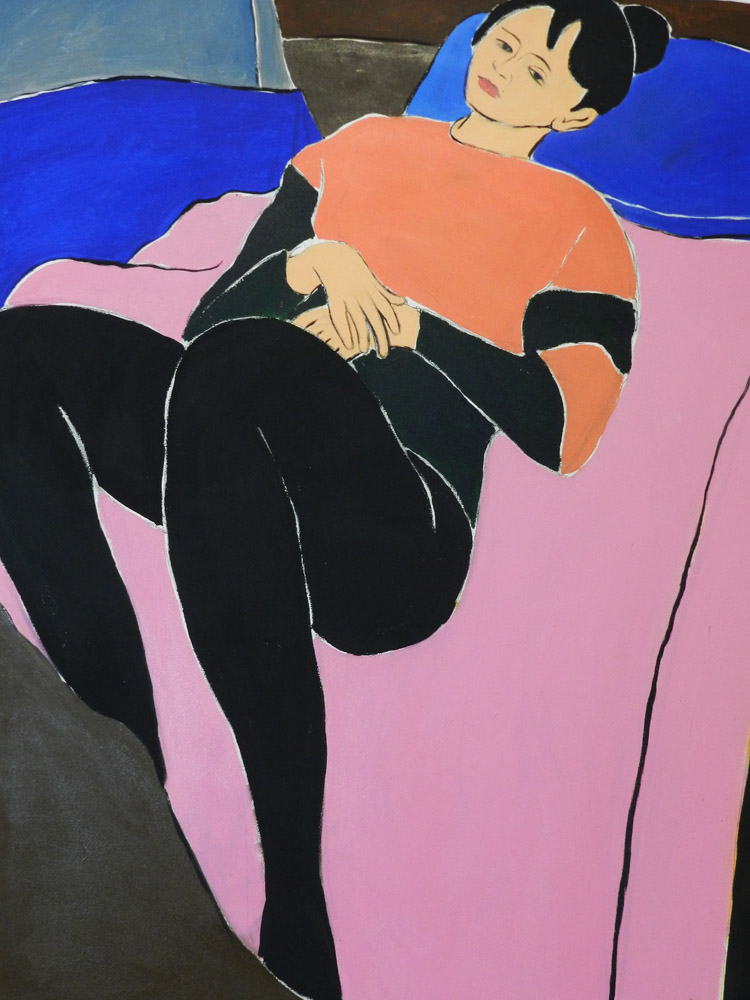
Untitled
Oil on canvas
2018
EC: Your new method of painting (the use of simplified forms and broad areas of flat, bright colour enclosed within dark and thick outlines ) echoes the cloisonnist technique adopted by modern artists Émile Henri Bernard and Paul Gauguin. The postures of some of the female figures also seem to be inspired by the works of 20th century masters such as Ernst Ludwig Kirchner and Henri Matisse.
GB: Well, you can say that my work has a late 19th and early 20th century feel to it. I find Matisse’s use of line and colour particularly beautiful for example, nonetheless, my work is also strongly informed by contemporary figurative artists such as: Eric Fischl, Alex Katz, Ranier Fetting, Georg Baselit…the list is endless really. I’m influenced by certain aspects of their work. Fischl for example, I’m intrigued by the way he treats the figure in certain contexts, whereas Katz, although I find his work a bit graphic, I’m impressed by the vibrancy of his palette.
I am basically combining the visual vocabulary of these modern and contemporary figures with my own voice and ideas; I constantly do that with my work.
EC: Gab, what inspired the evolution of your new visual language?
GB: I am always trying to find new means and ways to develop my artistic process; to keep interpreting the human figure. It worries me when artists get themselves pigeonholed into one particular style.
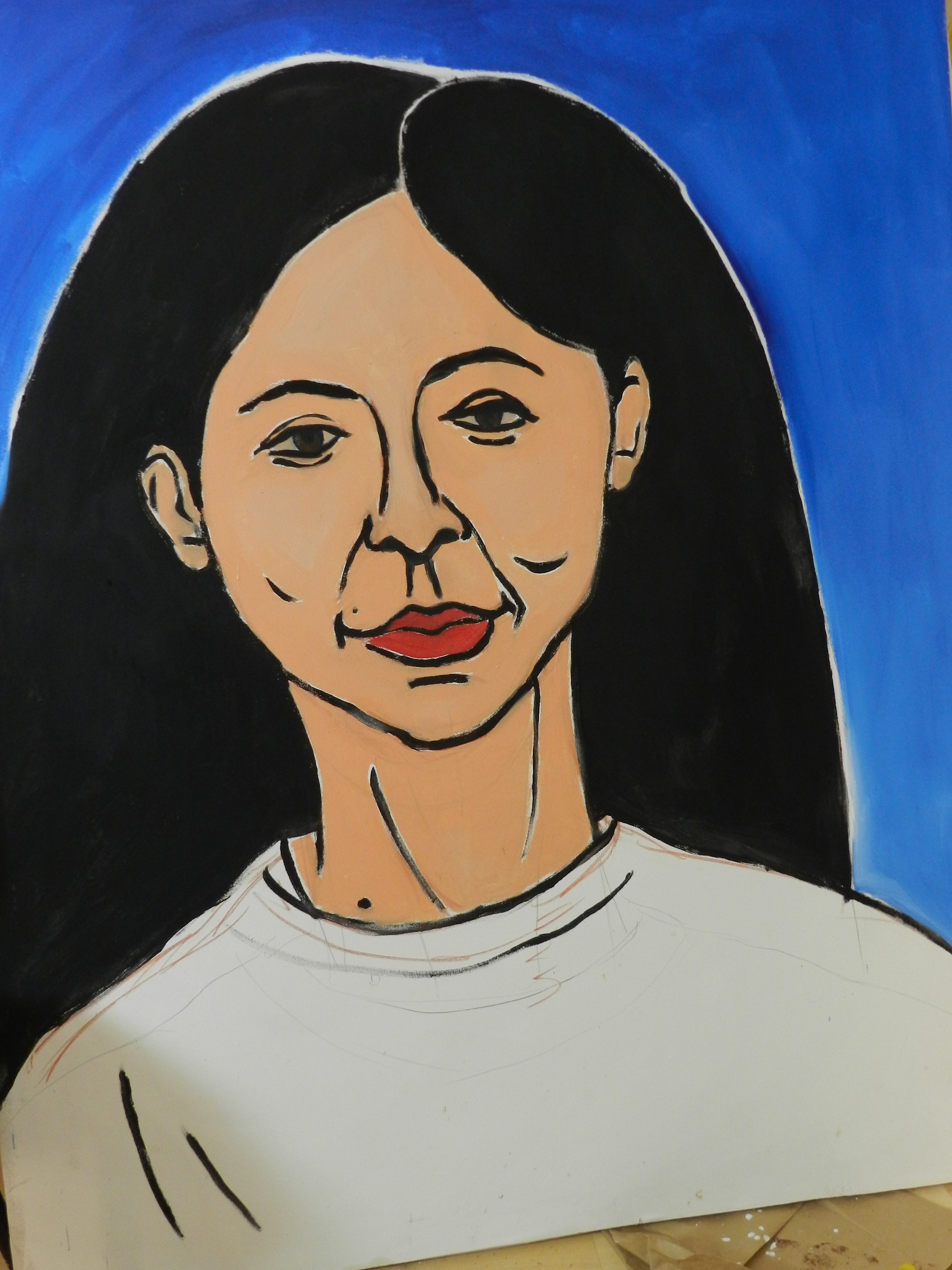
Untitled (painting still unfinished)
Oil on canvas
2018
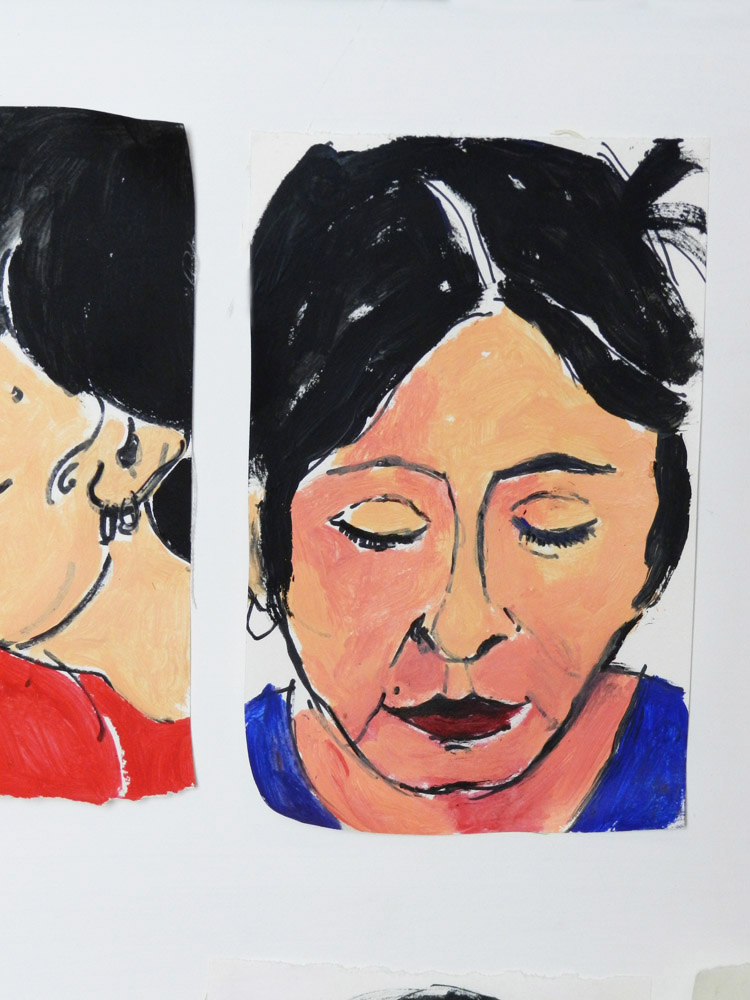
Study
Oil on paper
2018
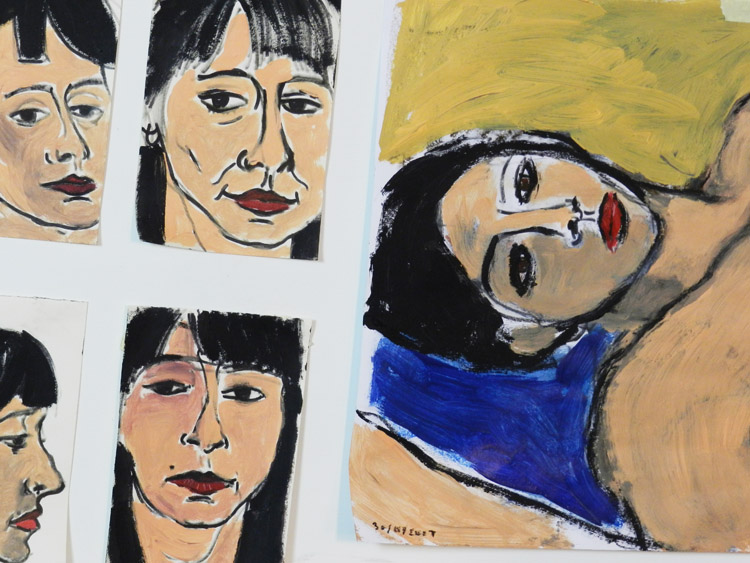
Various studies
Oil on paper
2017
EC: And…how come you’ve decided to focus these canvases entirely on the female figure.
GB: I’m obsessed, or rather, I’ve always been obsessed by the female figure (or with women in general). My father had recognised my interest in drawing women’s bodies at age of six or seven. He wasn’t shocked or shy by my pictures; on the contrary, he encouraged me to pursue my interest by introducing me to the works of the Italian artist Amedeo Modigliani. Modigliani’s fascination with painting emotionally intense and seductive women had really impressed me at the time; it conditioned my way of thinking really.
EC: Well, the physical beauty of the female body have stimulated the appetite of countless of artists for decades and decades.
GB: I don’t think I’ve ever spoken about this publicly – in fact, I am going to be a bit personal here – but I guess that my fascination with the female form relates to my childhood. My mother hasn’t always been present in my life so…I have no doubt that my attraction towards – or seeking comfort in – the female form is because of this absence.
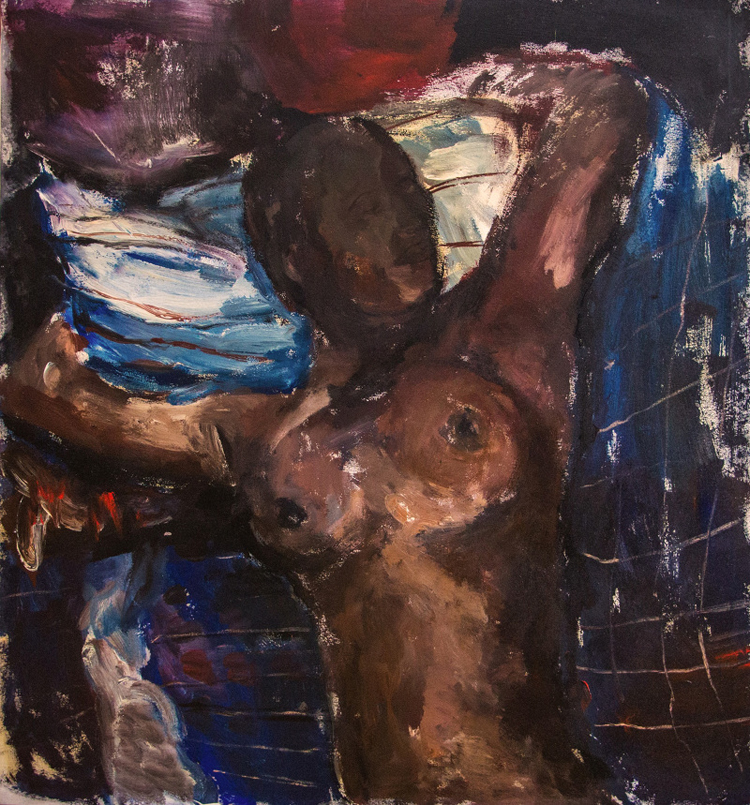
Reclining Nude – Part of Nude Series 2016
Oil on canvas
2016
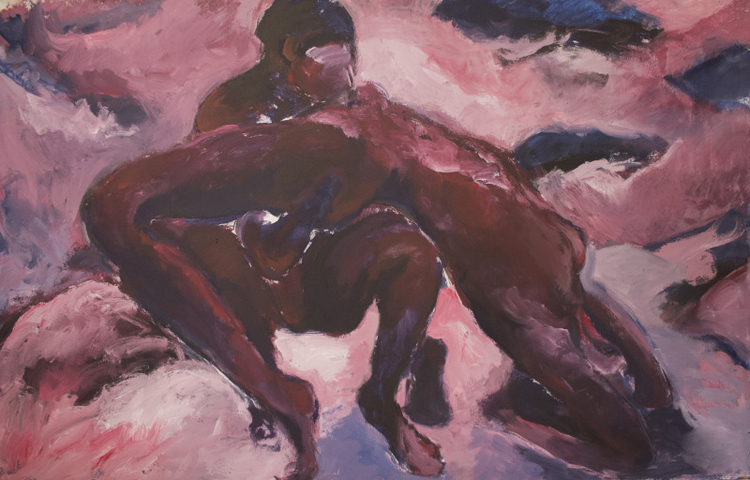
Two figures (red) – Part of Painting Series 2016
Acrylic on Canvas
2015
EC: Your new works exert a wonderful feeling of well being, or as Matisse would say “a soothing, calming influence on the mind.” The feeling of tension – or even at times sadness (as I see it ) – that permeated your previous canvases (images above) has turned into a tranquil vision of harmony, of beauty.
GB: I’ve always been concerned with evoking a wide array of emotions in the viewer. I want to create works that people could relate to, that could get lost or immersed into, just like when listening to emotionally moving music or watching an intense scene in a movie. My works are a progress of feelings; they all relate to particular moments in my life. Nonetheless, the feelings that I try to emit are not always as straightforward as they might seem on canvas.
EC: Are the figures in your work (in all of the works that you have produced so far) based on real personages…. I’ve been wanting to ask you in ages… 🙂
GB: 🙂 My work is never anonymous; there is always going to be a person I know involved in my work, whether I’m painting from the live or from my imagination/memory. This, though, does not mean that I am going to paint anybody I know. The people featuring in my work are usually people which are close/dear to me or have some-how left an impact on my life. As an artist, I’m not interested in painting the flesh. In fact, my aim is not to capture the way a person looks; I’m simply not interested in their physical appearance. I’m more interested in capturing their patterns of thinking, feeling and behaviour; basically all those elements which make that person who it is.

Untitled,Oil on Canvas, 2017
Various studies, Acrylic on Paper, 2017-18

Untitled
Oil on Canvas
2017-18

Untitled
Oil on Canvas
2017-18
EC: The person behind your new paintings seems to play an important role in your development as an artist.
GB: She has become a major source of inspiration for my new work. I’ve been painting obsessively on her face since 2017. She’s the same person behind the numerous portrait studies that are embellishing my studio walls. She also features in a series of drawings that I had made for Brikkuni’s music cover album: Rub Al Khali.
EC: You are planning to exhibit around 20-30 works during your upcoming exhibition. Will the subject-matter also focus on the female figure?
GB: I am still not sure. The works you are seeing here only represent a fraction of what is yet to come. I might be including male personages, maybe myself but……..
EC: I still haven’t asked you where and when is your upcoming exhibition going to take place?
GB: Coming November at the Malta Society of Arts, Valletta.
EC: I can’t wait! 🙂
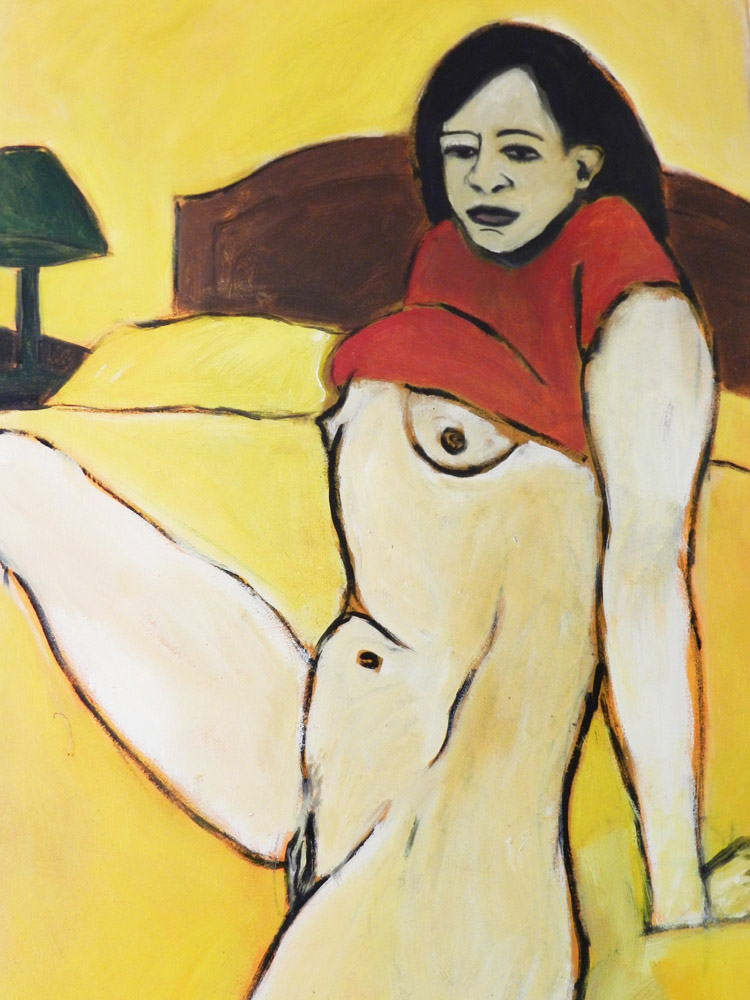
Untitled
Oil on canvas
2017
If you would to see more of Gabriel Buttigieg’s work click on this link gabrielbuttigieg.com
PHOTO CREDITS: evecocks.com
